PocketWizards’ Mini-TT1 and Flex-TT5 Review
Foreword
The hotshoe flash and radio triggering landscape is one of those places that changes with time. This applies doubly so with something like the ControlTL PocketWizards, as their performance and functionality will change as flashes come and go and firmware updates are made.
To put some perspective on this, when I initially wrote this review, it was late 2010, the best Canon flash on the market was the Speedlite 580Ex II, Nikon had arguably the best off camera optical flash system, and the competition in the radio trigger space was from Radio Poppers. Since then the landscape has changed, in some ways dramatically, in other ways not so much.
Just after I finished the first review, LPA Design released Control TL PocketWizards for Nikon flashes and with that, Nikon users were offered the benefits of both Nikon’s CLS wireless TTL control and PocketWizards’ trigger though the walls radio capabilities. Come 2012, and Canon has entered the radio trigger market with their new Speedlite Transmitter ST-E3-RT controller and Speedlite 600Ex-RT flash.
In short, I think it’s a fool’s errand to treat this topic statically, as you can with say a lens. As such, I’m now updating this review again to reflect 3 years of experience with the system, and compare and contrast against the changes in technology.
At their release, and actually until 2012, the Control TL PocketWizards were arguable the best solution for a Canon shooter wanting a remote TTL flash system. As of 2013, the decision is a little more complicated.
System Overview
LPA Design’s ControlTL PocketWizards did something that their contemporaries didn’t, the reverse engineered the TTL control protocols and built them into a slick system. Since the over-the-air protocol was LPA Designs, and not just an encoded version of the manufactures’ optical system, LPA Design could expand the scope of what they could control beyond just OEM flashes. As a result the ControlTL system expands beyond just a simple set of transceivers.
The core of the system is the MiniTT1 transmitter and the FlexTT5 transceiver. These are what interface with the camera’s TTL hotshoe and in turn, the TTL flashes. However the system expands from there. Users of Elinchrome and Paul Buff Einstine studio gear can remotely trigger and control flash power using the PowerST4 and PowerMC2 receivers respectively. Users of Alienbees studio strobes, can pair an FlexTT5 with a AC9 AlienBees Adapter, to control and trigger their flashes.
On the camera, side of things the AC3 Zone Controller provides easy control over the 3 supported zones, in 1/3rd stop intervals, of both manual flash power and TTL balance.
In addition, the MiniTT1 and FlexTT5 still transmit on the standard PocketWizard channels, so you can trigger Plus II, MultiMax, and PocketWizard compatible receivers (like the ones built into Profoto strobes) from your MiniTT1 or FlexTT5 transmitters, though obviously without TTL or power control.
Features
The thing that really impressed me about the Control TL PocketWizards are the number of features and improvements they offer over either Canon or Nikon’s flash system or any of the other radio systems that simply piggyback on the manufacturer systems.
HyperSync and High Speed Sync
HyperSync is one of those features that make the Control TL system unique. HyperSync uses a calculated pre-trigger offset to allow faster than X-sync speed shooting but without having to use FP/High Speed sync strobing. Since the flash is only being fired once, as it normally would, instead of being pulsed, as it does in high speed sync/FP mode, the flash can deliver more power to the scene.
Additionally the Control TL system will automatically transition remote Speedlites to either HSS/FP mode when the shutter speed reaches 1/640th or your predefined limit, though the exact limit to which any given camera will vary. For example my EOS 1D mark III will behave well with HyperSync all the way upto the 1/640th limit. However, my 5D mark III, will exhibit black bands at 1/320th.
Additionally HyperSync triggering works with the MultiMax and Plus II, so it can be used to trigger manual flashes attached to those triggers.
High Speed Sync Efficiency Gain
Since the Control TL system intercepts control signals directly from the camera and communicates with the flashes as if it was a cameras, it has far better control over the firing the flashes than an piggybacked radio system would have. Moreover, LPA Design has spent considerable effort optimizing the control timings not just to insure that things are correct but also to improve the efficiency.
One of the side effects of HyperSync and those timing tweaks is a major boost in useable flash power. For some cameras, that gain can be 1.6 stops or more at shutter speeds all the way up to 1/8000th of a second. Of course, the flip side of more power, is that at lower powers that power is used more efficiently, which means shorter recycle times and more flashes per battery charge.
Unfortunately due apparently to the way Nikon’s TTL protocol works, Nikon users will only see a decrease in recycle times, and not an increase in flash power.
In fact, the efficiency gain is a big enough deal that I actually use a pair of PocketWizards instead of an off camera cable when using a telephoto flash bracket.
Auto Rear Curtain Sync
Rear curtain sync is handy when there’s potential for motion blur in an image that’s balancing ambient and flash sources with a long shutter speed where there’s the capability of producing a motion blur. With rear curtain sync, instead of the blur seeming to originate from the subject, it appears to end with the subject, which is generally more pleasing.
Canon’s native system doesn’t even allow for rear curtain sync when using the optical wireless system. Adding the Control TL PocketWizards’ to the mix, however, not only adds rear curtain sync functionality, but the system can switch from front to rear curtain sync automatically at a user set shutter speed.
The only real downside to the rear curtain mode is that the PocketWizards will only hold the rear curtain flash for 8 seconds.
Low Power Test Mode
When used on or off camera, the standard test mode, as you’d receive if you pushed the glowing red pilot light, results in a comparatively high-powered flash. Depending on the settings, it can be anything from 1/32 of the rated flash power, to the actual flash power (in manual mode). The result of all of this is that testing to see if your flashes are firing, especially in a dimly lit room, can be quite attention getting.
However, when pressing the Control TL PocketWizard test button (when seated in a Control TL PocketWizard, the pilot light/test button is disabled), the remote flashes produce a much fainter burst. In fact, it’s faint enough, that unless you’re looking directly at the light, the odds are you’re not going to notice it.
Pre-flash Boost
Pre-flash boost is another feature that exists outside of either the OEM optical solutions or the piggybacking radio solutions. In some situations, when the flash head is pointed away from the scene it’s lighting, a situation you’d commonly experience when doing bounce fill, the TTL pre-flash can be too under powered for the camera to accurately determine the proper exposure. Pre-flash boost mode is a potential remedy for these occasions. When pre-flash boost is enabled, the Control TL ‘Wizards will boost the flash power for the pre-flash and automatically compensate for the boosted, and this metered, difference when firing the actual flash.
Cross Brand Compatibility
With the late 2010 launch of the Nikon compatible PocketWizards, LPA Design added limited cross platform compatibility. As it stands, the initial release only supports manual power and triggering up to the x-sync speed. However, LPA Design has said they hope to expand this functionality in 2011.
When cross brand compatibility is fully functional with TTL support, this will be a very nice feature for ControlTL PocketWizard users in a number of ways. One, Canon users will be able to sidestep interference issues with Canon’s noisy flashes, by using less RF noisy Nikon flashes. Second, it makes it possible for small groups of shooters, or camera clubs, that want to pool resources while still having full functionality in the field. So long as everyone has the latest firmware and is using ControlTL Pocket Wizards, it won’t matter whether the model is lit with SB-900s or 580ExIIs they’ll just work.
The Hardware
MiniTT1
The MiniTT1 is designed to be your on camera module. Its diminutive size makes it an unobtrusive while sitting in the hot shoe on its own, and doesn’t add any real size when mounted under a flash either.
The MiniTT1 has a limited number of external controls. In fact, there are two, the combination configuration and power switch, and a test button. The limited controls, however, belie the complete range of functionality.
Unfortunately, LPA design elected to use rather small sliding 3 position switches for the config/power switch, as well as the group selector on the FlexTT5 and the group mode switches on the AC3. I find somewhat difficult to set easily to the middle position. It’s not so much of a big deal with the config/power switch as I can get away with working in C1 99% of the time, but it really becomes slightly frustrating in the other cases.
The MiniTT1 can transmit on all 20 of the new Control TL channels as well as all 32 basic channels that the MultiMax uses. However, it cannot transmit on MultiMAX custom ID frequencies. In addition, all of the advanced Control TL settings can be customized separately for each of the two modes (C1 and C2).
Power for the MiniTT1 is supplied by a CR2450 battery. LPA Design claims it will last for 100s of hours or 1000s of triggers, and that seems to be on par with my experience. That’s said, care should be taken with the quality of batteries used. My first battery, the one that came with the MiniTT1, lasted a little more than a year of intermittent use. The first replacement, a cheap generic brand, died within a couple of weeks. The second replacement, an Energizer cell, has lasted more than a year and a half.
Though I’ve never had the displeasure of running out of battery in the field, and the CR2450 can be sourced from most drugstores like Walgreens or CVS, it’s one of those things that has never really sat well with me. I always end up carrying a spare just in case, and that’s one more thing in the bag to keep track of and potentially lose.
Unfortunately, the MiniTT1 has one, in my opinion, major disadvantage; range.
Compared to the larger FlexTT5, the MiniTT1 just doesn’t seem to have the range especially when dealing with RF noisy Canon flashes. At the time the Control TL system was released, I guess it made sense to have a small transmitter for on camera work when you still needed a flash or commander unit on camera to control the settings. However, fast-forward a couple of years and add an AC3 Zone Controller and that use case doesn’t seem as relevant anymore.
As it stands now, and has since I got my AC3 in late 2010, I haven’t actually put a flash on the MiniTT1 on camera. The top hotshoe is always occupied by the AC3. In many ways, I don’t see much of a point for the MiniTT1 anymore. In fact, if I were buying these again, I would have skipped the MiniTT1 and just got another FlexTT5. That said, what would interest me would be a slightly larger on camera controller with a better antenna, built in AC3 functionality, and AA batteries.
FlexTT5
The FlexTT5 trades the diminutive size of the MiniTT1 for receiver capabilities, a bigger antenna, as well as a more flexible way to interface with strobes or cameras. In terms of controls, in addition to the configuration/power switch and test button, the FlexTT5 has an additional zone selector switch.
Unfortunately, like the MiniTT1 (and AC3) the Flex TT5 uses the same 3-position sliding switches for the group selection as it does for the power/configuration. In practice, I’ve found this creates two somewhat frustrating issues for me.
First, the switches feel exactly the same. I can’t even being to count the number of times I’ve switched a FlexTT5 to group C instead of turning it off when doing things by feel. Needless to say, I do it a lot. Secondly, setting the group selector to group B has the same problem as picking the C2 mode; it’s just hard to do without being very deliberate about it. I’ve on many occasions found a misfiring or non-firing flash to be merely be a case of mis-setting this switch.
When it comes to outputs, the FlexTT5 has 3; the TTL compatible hot shoe, a 1/8” stereo/TRS mini-phone camera/P1 port, and the 1/8” mono mini-phone flash/P2 port.
Unlike the Plus II, the P1 and P2 ports are not interchangeable. The P1/Camera port is designed for use with PocketWizards’ 2-stage camera trigger cables and is not intended for triggering strobes. The P2/flash port with its 200V 250-milliamp continuous rating, however, should be capable of being used with almost any kind of strobe. In addition to handling TTL flashes, the hot shoe can safely trigger any shoe-mount flash with a sync voltage less than 50V and with less than 250 milliamps of current, which should cover all modern and most pre-digital shoe mount flashes.
Power for the FlexTT5 is delivered by 2 AA batteries. LPA Design suggests that you should get roughly 60 hours of run time out of the AA batteries. I pair my FlexTT5s with Sanyo Eneloops low-self-discharge NiMH rechargeables, and they seemingly last forever with my usage.
As much as I like the FlexTT5 it does have its problems as well. For example, the practical necessity of maintaining alignment between the flash and lens when the Flex TT5 is used on camera, dictated that the hotshoe and hotfoot are aligned above and below each other. The side effect is that the 1/4-20 tripod socket is offset for the flash’s axis.
For 2 years, this never was an issue for me. When pairing the Flex TT5 and a flash with an umbrella, the slight offset is hardly relevant. However, since I’ve started using Lastolite’s EzyBox Hotshoe collapsible soft boxes and the off centering of the flash mount renders my Really Right Stuff flash QR system unusable, instead having to mount the flash via the bottom hotshoe. Admittedly, a minor complaint, but in retrospect I would have been nice if LPA Design had managed to get the tripod socket aligned with the normal fore-aft axis of the flash.
The Experience
Configuration – PocketWizard Utility
You can use the PocketWizards right out of the box. However, it’s often useful to make changes to the configuration.
The ControlTL PocketWizards take a major departure from the previous PocketWizard products; all of the configuration is now done via PocketWizard Utility from either a PC or Mac computer. In fact, other than selecting C1 or C2, or the strobe group, there is little to no configuration that can be done from the device. In addition to configuration, the utility also manages firmware upgrades, and a PocketWizard inventory.
The PocketWizard Utility is one place that has seen considerable development over the years since release. Initial releases didn’t have a means to save or load flash configurations; requiring you to write your settings down before a factor reset from a firmware update or just to have multiple profiles. The solution isn’t perfect. Changes in safe format, due to new features/firmwares, will prompt a condition where you can’t just reload your old settings from a save.
About the only real complaint I have with the utility is that there are so many options and settings that it can be confusing and overwhelming. I think LPA Design should add a basic mode that lets you make some of the more necessary or frequent changes while hiding many of the details that can usually be left alone.
There’s one other downside to having to change all the configuration settings in software, and that’s that it requires you to have a computer to do it. Now, I’m not entirely versed in the capabilities smart phones, like the ever-popular iPhone, but it would be nice to see a mobile phone version of the PocketWizard Utility, assuming it could communicate to the devices via the phones USB port.
Setting up to Shoot
Setup is straight forward, but there is a required order for things to function properly. Part of this is the transmitter uses the first exposure to perform a calibration operation before the system starts synchronizing. For this to work right, I’ve found the MiniTT1 or FlexTT5 must be turned on before the camera is turned on.
On the flash side of things, I find powering up the flash before the receiver works well and immediately puts the flash into ETTL mode. This will be indicated by a pre-flash pop form the flash as it switches into ETTL mode.
Range
The Control TL PocketWizards weren’t without their sticking points and growing pains. The biggest one of those is radio interference from RF noisy flashes. This is especially problematic for Canon users where many of Canon’s flashes are particularly noisy in the same spectrum as the Control TL channels. Because of this interference, the range of Control TL devices is shortened when used with the noisy flashes.
Fortunately, the range with unshielded strobes isn’t entirely horrible either. In my testing, using one of Canon’s noisiest flashes (the 580Ex II), I could reliably trigger the flash out to about 100 feet with a clear line of sight.
Unfortunately, things get more complicated when you’re in a studio setting, especially if your light modifiers use metalized materials. I’ve increasingly run into issues with triggering when using 580Ex II strobes given certain geometric configurations of the transmitter and receiver antennas, and various environmental characteristics. For example, a strobe right next to my camera may be unwilling to fire if the camera is in portrait orientation but will in landscape. Fitting something like the AC5 Soft Shield helps, but renders the entire setup far more convoluted than it needs to be.
Arguably, the first line of defense against the RF noisy Canon flashes is to pick a channel that isn’t particularly affected. LPA Design recommends one of the channels between 345 and 347 MHz, such as 2, 4, 5, 6, and 20. This won’t completely alleviate the problem but can help as much as 30%.
I’ve also been told that using a FlexTT5 on the camera does improve the range and reliability situation, and I’ve seen some anecdotal evidence of this in at least one instance in the field.
From there on things, get more and more complicated. LPA design has produced both a hard and soft shield for Canon flashes, the AC5 and AC7 respectively. They both work by blocking radiated RF noise and filtering the hotshoe contacts to clean up the interference. With a AC5 installed, I get a 3-fold improvement in range out to nearly 300 feet—Rob Galbraith saw an even more impressive 5-fold improvement in his tests.
Unfortunately, both the AC5 and AC7 shields make for a fiddly setup. The AC5 covers the rear display making it hard to adjust the zoom, which still needs to be set at the flash. The AC7 is slightly better, and it puts the flash on axis for better use in an umbrella, but it’s still a less than ideal workaround to a less than ideal situation.
The final, and most drastic solution, is to have your flash modified by one of the companies that PocketWizard certifies modify your flash for RF noise. I’m not sure what the extent of the modification is, but it likely involves the installation of filtering electronics in between the hot shoe and the flash’s electronics. The modification promises to be the cleanest solution, given that once the flash is moded there’s no need for the other workarounds.
Of course in the end, the biggest question is does the range issues it pose a problem?
In my experience, the answer is it depends.
Working in a studio more often than not, I don’t have triggering problems. Until I do. In many cases, I can rectify the issue by simply rotating the antenna on the FlexTT5 under the flash, or by rotating the flash head 180° on its axis so, the antenna points towards the camera. Normally I don’t have to resort to adding the AC5 soft shield, and I haven’t even bothered buying AC7 hard shields.
This is also one area that’s affected by changes outside of LPA Design’s control. Canon’s Speedlite 600EX-RT now includes radio triggering, though on the 2.4GHz band not the 340-350MHz bands. However, even given the differences in bands, the 600Ex-RT should be designed to emit less RF noise, and anactdotal testing suggests it does.
It’s also important to note, that these range issues are only when triggering some remote flashes, most notably Canon’s 580Ex, 580Ex II, and 430Ex. The MiniTT1 and FlexTT5 should get their rated 800-1200 foot range when triggering other flashes and cameras.
Conclusions
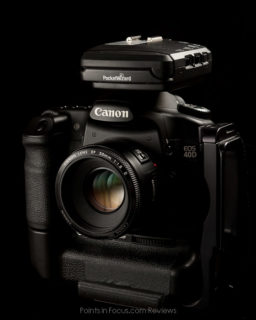 When I started looking for a TTL wireless flash control system to replace doing everything manually with PocketWizard Plus IIs, I started with the only available option at the time, the Radio Popper system. It didn’t take long after LPA Designed announced they were going to build a TTL PocketWizard system to put my Radio Popper plans on hold, since the Radio Poppers never really offered anything but longer range over Canon’s optical system.
When I started looking for a TTL wireless flash control system to replace doing everything manually with PocketWizard Plus IIs, I started with the only available option at the time, the Radio Popper system. It didn’t take long after LPA Designed announced they were going to build a TTL PocketWizard system to put my Radio Popper plans on hold, since the Radio Poppers never really offered anything but longer range over Canon’s optical system.
When 6 months after their release, LPA Design announced the AC3 Zone Controller to go with the TTL PocketWizards, I was completely sold on the system. In fact, when I was considering switching from Canon to Nikon, the lack of Nikon compatible Control TL ‘Wizards was a contributing factor to the “do not” list.
In 2010, a basic 3 light setup with Radio Popper PX system would run $1000 before adding flashes. If you need an on-camera controller—most Canon users and all pro camera users—you can add between $300 and $500 for either an ST-E2/SU-800 or 580ExII/SB-900. The same 3 light setup using Control TL Wizards’ consisting of a MiniTT1 and 3 FlexTT5s will run around $900. Adding complete 3-channel control to the system requires a $70 AC3 zone controller.
As of 2012 Canon users now have a 3rd option for radio TTL triggering, and this one comes from Canon themselves. Canon’s new Speedlite 600EX-RT and Speedlite Transmitter ST-E3-RT offer Canon’s RF TTL system. Unlike the Control TL PocketWizards, the Canon system uses the 2.4 GHz frequency band, which has range and interference implications. However, on the other hand, Canon has elected to add 2 more lighting groups for a total of 5 instead of the previous 3.
The Canon system, being integrated means that there’s no additional cost to the hardware, however, it does also necessitate newer more expensive flashes and a newer more expensive on camera controller. Even then, Canon’s system is cheaper than PocketWizards’ plus Canon flashes. For a 3 light setup plus the smaller controller, you’re looking at about $2026 (3- 600EX-RT’s and a ST-E3-RT) versus about $2500 for a PocketWizard system using older 580Ex II flashes (3- 580Ex IIs, 4- Flex TT5s, and a AC3). So long as you’re working inside the 30m/100ft. range and don’t have other PocketWizard needs, the Canon system looks strongly compelling.
If you’re serious about your photography and are looking for reliable TTL radio triggers, or want a level of control over your flashes that’s unprecedented for Canon users, I don’t see any choice other than the Control TL PocketWizards.
As I sit here finishing off this this review, I realized, I’ve written more than 3000 words on the TTL PocketWizards, and I still don’t think I’ve done the system justice or conveyed how awesome I think they are.
Updates, Errata, and Further Comments
February 17, 2011: Potential for Problems with Canon’s 580Ex II
There has been a growing number of discussions on the internet—I’ve received a few emails regarding that discussion and as noted there’s a comment at the bottom of this article regarding it—regarding the Control TL PocketWizards damaging Canon (and potentially other brand) flashes. LPA Design, has released (at least Canon Rumors has posted) the results of their investigation into this issue. The document is a 19-page long highly technical article; however, I’ve tried to distill the key points in my own post on the matter.
In short, it appears that the design of the Canon 580Ex II flash, allows a spark to jump between the flash tube and the metal reflector behind it, which in turn eventually causes a part on the flash’s control board to be fried. The problem appears to become more of an issue the more the flash is triggered, with high-speed sync’s multiple rapid triggers in a single exposure being a major accelerator. Reliable and more powerful, high-speed sync being one of the major selling points of using Control TL PocketWizards. As a result, a problem that may have rarely reared its head under normal use became more apparent.
What’s clear is that there is a small chance for flashes to die. What’s not clear is whether using the Control TL PocketWizards makes this appreciably more likely.
If it’s any reassurance, I’m still using my Mini and Flex TTL PocketWizard’s and Canon’s 580Ex II flashes and I still recommend the system. As far as I can tell, the issues only affect a small number of users. However, those that are affected, however, have my sympathy, as I wouldn’t want to kill my expensive flashes either.
More importantly, this issue does not appear to affect Nikon users at all or for that matter Canon’s 430Ex II flashes.
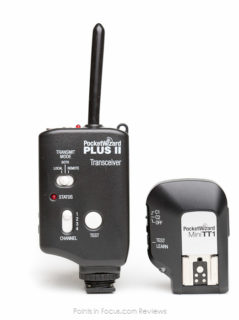
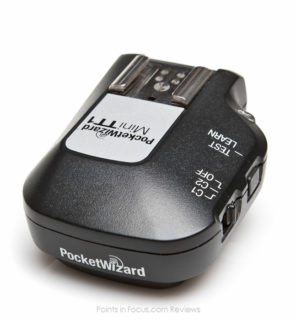
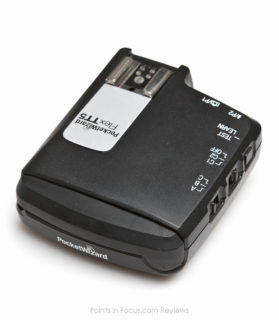
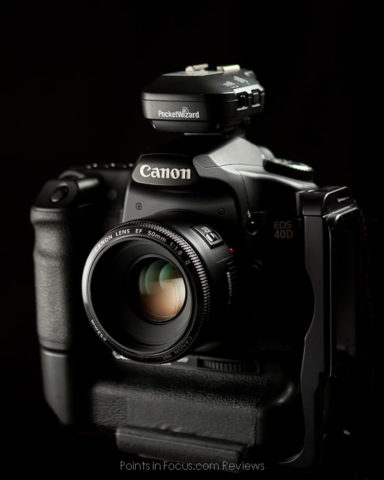
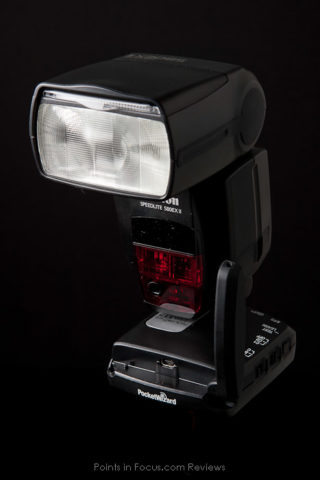
Comments
Hi! I´d like to know if there is any difference in tt1 and tt5 that was made one year ago from those made now. Are they the same? Is just a software upgrade issue? Because Im about to buy that old one.
Thanks
I’m not aware of any changes in the hardware its self.
As you noted, the firmware may be newer on more recently produced versions but that’s easy enough to upgrade on the old ones. The only other change that I’m aware of is that the FlexTT5’s now ship with an AC-5 soft shield in the box, where originally they didn’t include that.
RE: Autur Ocubaro …difference in tt1 and tt5…
I chose to purchase all TT5s instead of a single TT1 and multiple TT5s because for an add’l $20 I got a full power and flexible transmitter/receiver instead of just a transmitter. Tests also show that the TT5 have a stronger transmit range than the TT1. The inherent flexibility of the TT5s more than overcome the slightly larger size on camera verses the TT1.
Dont’ get me wrong, the TT1 is small and cute on the camera but its non-standard battery is guaranteed to fail in the middle of your most important shoot; double AAS are everywhere.
well, i’m not sure if i totally agree with you. after 2 fried 580Ex II’s and now a fried Nissin DI866, i don’t think i’ll be using my PW’s again anytime soon.
Hi ,
I bought a kit with: 1 MiniTT1, 3 FlexTT5 and AC3 to use with my Canon EOS 5DMk II and 3 flashs Canon 580 EX II.
The system all functioned very well per 4 or 5 days. After this only one flash synchronizes with the camera.
The other flashs shoot but they do not synchronize with the camera. What the problem? How I have to proceed?
Can you help me?
Start with the embarrassingly simple stuff:
Make sure the flashes function properly on camera
Check that the batteries are good in everything
Flash the PocketWizards to the latest firmware version
Do a factory reset on the PocketWizards
Double check the flashes come up with ETTL on the rear display
Double check the physical switches for channel (TT1/TT5), group (TT5) and group mode/enable (AC3) are all set correctly
When you say they aren’t syncing, are they firing but not at the correct time or are they simply not firing at all? If the flashes fire but not at the correct time what shutter speeds are you at? If you’re between 1/200 and 1/500th you may need to either disable Hypersync or adjust the Hypersync timings. Being on the latest firmware should help as well, as they generally contain compatibility fixes.
If they aren’t firing at all again, check that your groups are set properly and enabled on the TT5s and the AC3.
Also:
Do all the flashes perform correctly when used on camera?
Does the flash sync on only one transceiver or is it only one flash that syncs on any transceiver?
Unfortunately, I’ve never been all that good with troubleshooting things remotely, I tend to have to have my hands on it to figure out what’s wrong. If none of this helps, I’d suggest contacting LPA Design for support though PocketWizard.com. They’ll be able to walk you though a set of well organized steps better than I can.